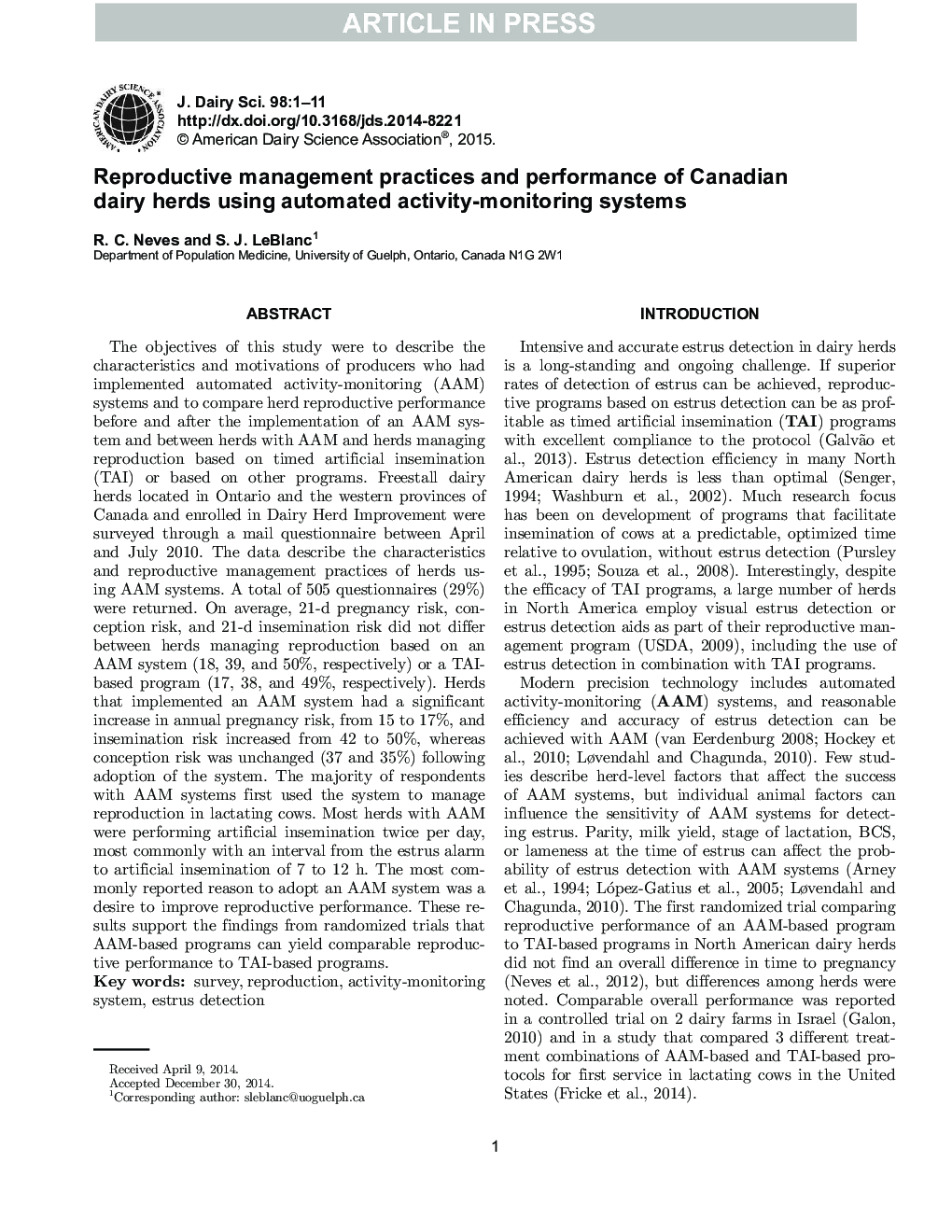| Article ID | Journal | Published Year | Pages | File Type |
|---|---|---|---|---|
| 10974837 | Journal of Dairy Science | 2015 | 11 Pages |
Abstract
The objectives of this study were to describe the characteristics and motivations of producers who had implemented automated activity-monitoring (AAM) systems and to compare herd reproductive performance before and after the implementation of an AAM system and between herds with AAM and herds managing reproduction based on timed artificial insemination (TAI) or based on other programs. Freestall dairy herds located in Ontario and the western provinces of Canada and enrolled in Dairy Herd Improvement were surveyed through a mail questionnaire between April and July 2010. The data describe the characteristics and reproductive management practices of herds using AAM systems. A total of 505 questionnaires (29%) were returned. On average, 21-d pregnancy risk, conception risk, and 21-d insemination risk did not differ between herds managing reproduction based on an AAM system (18, 39, and 50%, respectively) or a TAI-based program (17, 38, and 49%, respectively). Herds that implemented an AAM system had a significant increase in annual pregnancy risk, from 15 to 17%, and insemination risk increased from 42 to 50%, whereas conception risk was unchanged (37 and 35%) following adoption of the system. The majority of respondents with AAM systems first used the system to manage reproduction in lactating cows. Most herds with AAM were performing artificial insemination twice per day, most commonly with an interval from the estrus alarm to artificial insemination of 7 to 12 h. The most commonly reported reason to adopt an AAM system was a desire to improve reproductive performance. These results support the findings from randomized trials that AAM-based programs can yield comparable reproductive performance to TAI-based programs.
Keywords
Related Topics
Life Sciences
Agricultural and Biological Sciences
Animal Science and Zoology
Authors
R.C. Neves, S.J. LeBlanc,
